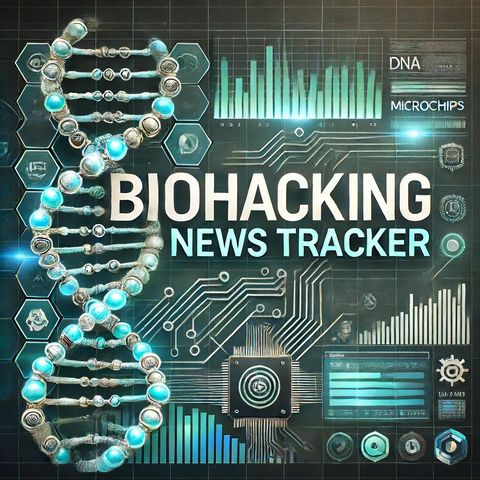The Transformative Tide: Biohacking's Meteoric Rise and the Tech Revolution Reshaping Wellness

Download and listen anywhere
Download your favorite episodes and enjoy them, wherever you are! Sign up or log in now to access offline listening.
The Transformative Tide: Biohacking's Meteoric Rise and the Tech Revolution Reshaping Wellness
This is an automatically generated transcript. Please note that complete accuracy is not guaranteed.
Description
The biohacking industry is experiencing rapid growth and significant transformations, driven by several key factors. ### Market Size and Growth As of 2023, the global biohacking market was valued at...
show more### Market Size and Growth
As of 2023, the global biohacking market was valued at approximately USD 20-27 billion, depending on the source[2][3][4]. It is projected to grow at a Compound Annual Growth Rate (CAGR) of 15.42% to 19.8% from 2024 to 2030 or 2033, reaching estimated values of USD 78.67 billion to USD 155.63 billion[1][2][4].
### Product Segments
The wearables segment dominates the market, accounting for a significant share due to the increasing adoption of wearable health trackers, smartwatches, and other health monitoring devices. These devices enable users to track and analyze their biometric data, contributing to a more personalized and data-driven biohacking approach[1][2][3].
### Applications and End-Users
The diagnosis and treatment segment is growing rapidly, driven by the use of biohacking practices such as nootropics and wearable technologies for body enhancement and health monitoring. Pharmaceutical and biotechnology companies are also driving growth, seeking novel solutions to address rising chronic diseases[1][2][4].
### Regional Insights
North America holds the largest market share, primarily due to heavy investments in research and development and the prevalence of chronic illnesses. The Asia-Pacific region is expected to grow at the fastest rate, driven by increasing healthcare expenditure and a willingness to invest in innovative health solutions[1][2][4].
### Consumer Behavior
There is a significant shift in consumer behavior towards health consciousness and preventive healthcare. Consumers are increasingly adopting wearable devices, smart drugs, and genetic testing kits to monitor and improve their health. This trend is fueled by the desire to enhance lifespan, prevent health issues, and optimize mental and physical abilities[2][3][5].
### Regulatory and Technological Developments
Regulatory support for new biohacking applications in drug development is a key driver. Governments and private companies are investing heavily in research and development, leading to the emergence of new technologies such as advanced health smartwatches, neurofeedback devices, and implantable chips[1][3][4].
### Market Disruptions
The biohacking market is experiencing disruptions due to the integration of technologies like Artificial Intelligence (AI) and the Internet of Things (IoT). These technologies enhance the functionality of wearable devices and enable real-time data transmission to healthcare professionals, improving patient outcomes[2][3].
### Industry Leaders' Responses
Companies like Thync Global, Inc., Health Via Modern Nutrition Inc., Apple Inc., and Fitbit, Inc. are at the forefront of this market. They are focusing on combining technology, science, and human performance to transform well-being. For example, Apple's integration of health monitoring features in its smartwatches and Fitbit's advanced health tracking capabilities are setting industry standards[2].
### Supply Chain and Price Changes
The supply chain is evolving with increased focus on personalized and contextualized products. This has led to more sophisticated manufacturing processes, which in turn may influence pricing. However, detailed price changes are not yet widely reported, but the overall trend suggests that as demand increases, economies of scale could stabilize or reduce prices for biohacking products[3][4].
In summary, the biohacking industry is characterized by rapid growth, driven by technological advancements, increasing health consciousness, and significant investments in research and development. As the market continues to expand, it is expected to see further innovations and integrations of AI and IoT, shaping the future of health and wellness.
Information
| Author | QP-4 |
| Organization | William Corbin |
| Website | - |
| Tags |
Copyright 2024 - Spreaker Inc. an iHeartMedia Company

Comments